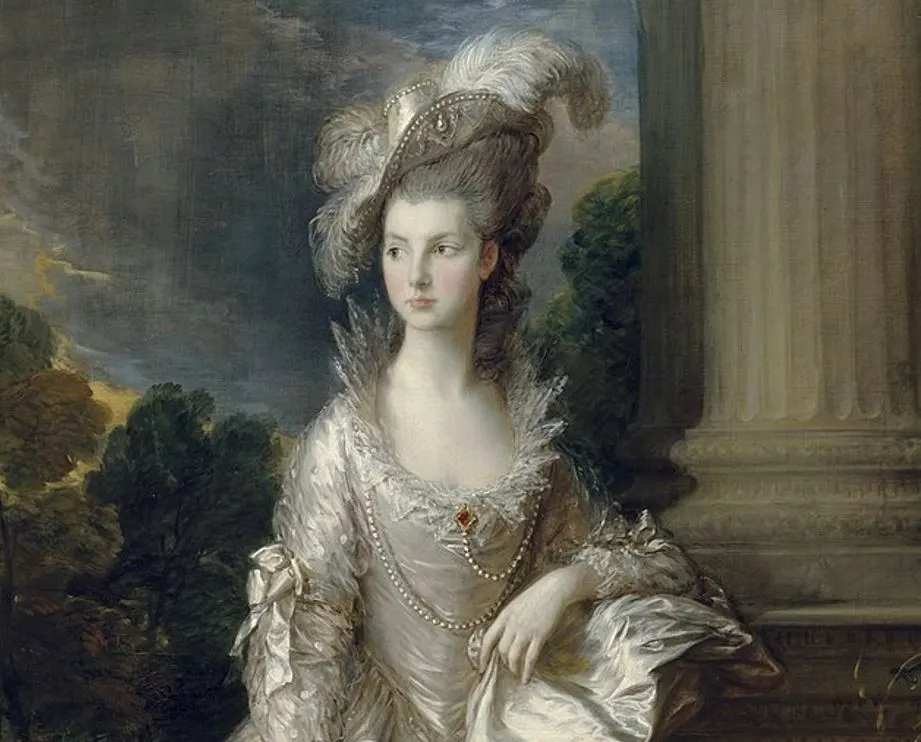In the vast canvas of human emotions, sadness is a color skillfully captured and portrayed by artists throughout the ages.
From heart-wrenching depictions of personal loss to poignant reflections on the human condition, the world of art has been a sanctuary for expressing the profound melancholy that touches us all.
This article delves into the realm of sorrow as we uncover the stories behind some of history’s most renowned and impactful sad paintings.
Each stroke of the brush, every shade of pigment, whispers a tale of grief, longing, and contemplation. These paintings traverse through time, exploring the brushwork that has immortalized these emotions and allowed us to connect with the universal experiences that make us human.
In this compilation of the “Top 15 Famous Sad Paintings in History,” we will journey through different artistic periods and styles, from classical realism to abstract expressionism, and unravel the stories and emotions.
1. Christina’s World – Andrew Wyeth
Andrew Wyeth’s “Christina’s World” portrays a young woman in a field, her outstretched figure imbued with a sense of isolation and yearning. The farmhouse in the distance stands as a distant dream, symbolizing unattainable aspirations and the ache of longing.
In reality, she was Anna Christina Olson (1893-1968), a woman from Maine who had been unable to walk since she was a child. She simply refused to use a wheelchair so she crawled everywhere instead.

2. The Last Supper – Leonardo da Vinci
Leonardo da Vinci’s iconic “The Last Supper” captures the world-famous moment of Christ’s final gathering with his disciples. Through their expressions, da Vinci conveys the impending tragedy, enveloping the scene with an aura of sorrow, sacrifice, and the inevitability of separation.
This Last Supper painting hardly needs an introduction, but it’s clear that the Italian polymath managed to convey this tragic moment in the final days of Christ’s life perfectly.

3. La Mélancolie – Louis-Jean-François Lagrenée

La Mélancolie by Louis-Jean-François Lagrenée is a captivating personification of melancholy. An angelic figure contemplates with a gaze heavy with introspection, embodying the emotional weight of sadness and the depths of human thought.
Even though this painting was completed over 2 centuries ago (in 1785), it remains one of the most emotionally-charged paintings at the Louvre Museum in Paris today.
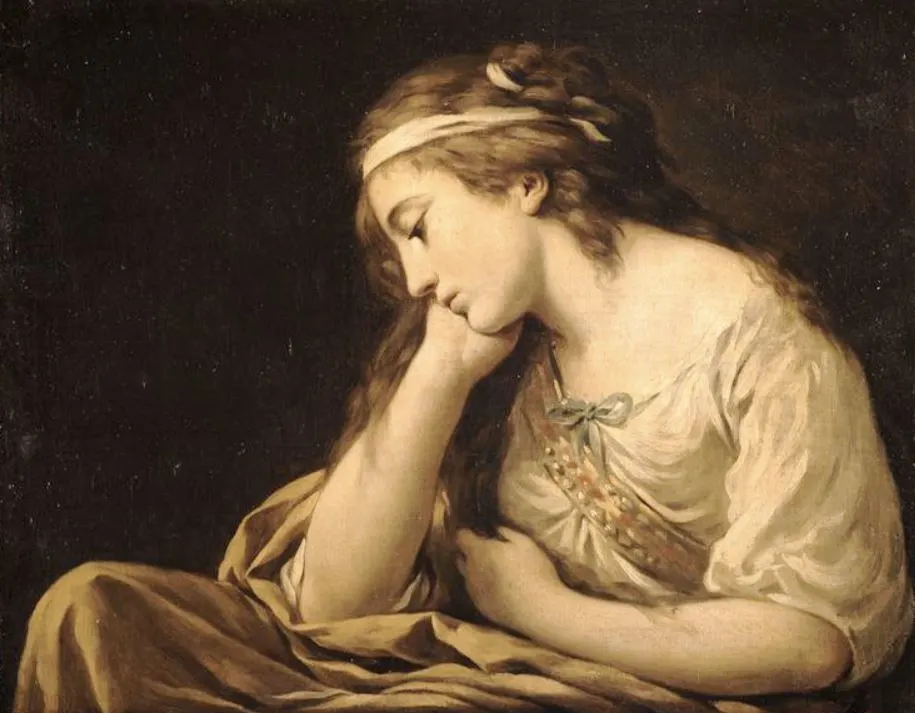
4. The Old Guitarist – Pablo Picasso: Pablo Picasso’s
The “Old Guitarist” by Pablo Picasso is a painting that portrays a frail figure cradling a guitar, the bluesy tones of which mirror his desolation. This image encapsulates vulnerability and artistic expression as a refuge in times of pain.
This painting by Picasso is one of the ultimate masterpieces of his so-called Blue Period in the early 20th century. He became inspired to complete this work when he witnessed an old guitarist on the streets of Barcelona.
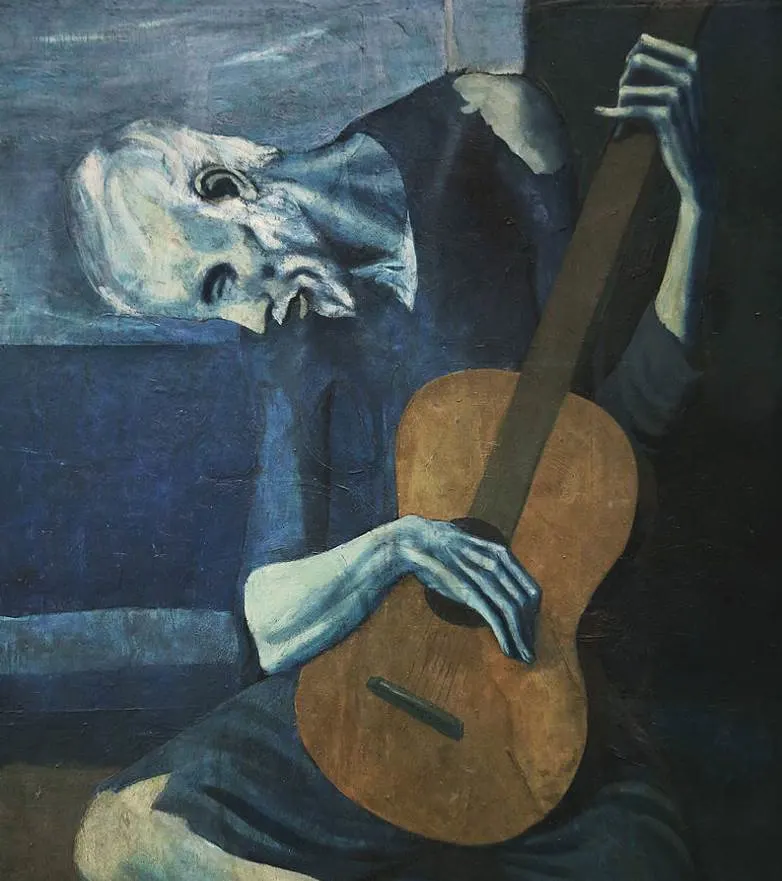
5. L’Absinthe – Edgar Degas
L’Absinthe by Edgar Degas presents two solitary figures lost in thought at a café. The painting captures the ennui of urban life in the 19th century, evoking a sense of isolation and despair.
The two people were known well by Degas. Even though they appear to be very sad, they were actually a successful actress named Ellen Andrée and a painter named Marcellin Desboutin.
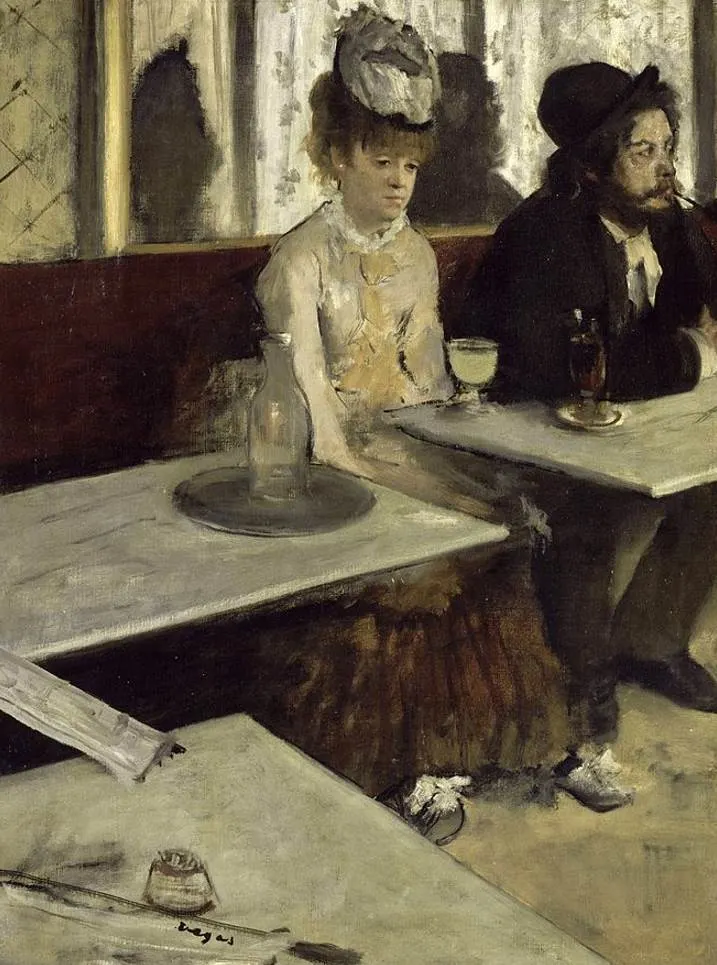
6. The Death of Marat – Jacques-Louis David
Jacques-Louis David’s “The Death of Marat” depicts the lifeless body of Marat, an important figure during the French Revolution in the late 18th century. The painting exudes sorrow and sympathy, commemorating a life sacrificed for ideals.
Marat was a friend of David who was killed by a young political opponent named Charlotte Corday. Equally tragic is that she was executed by guillotine just a few days later.
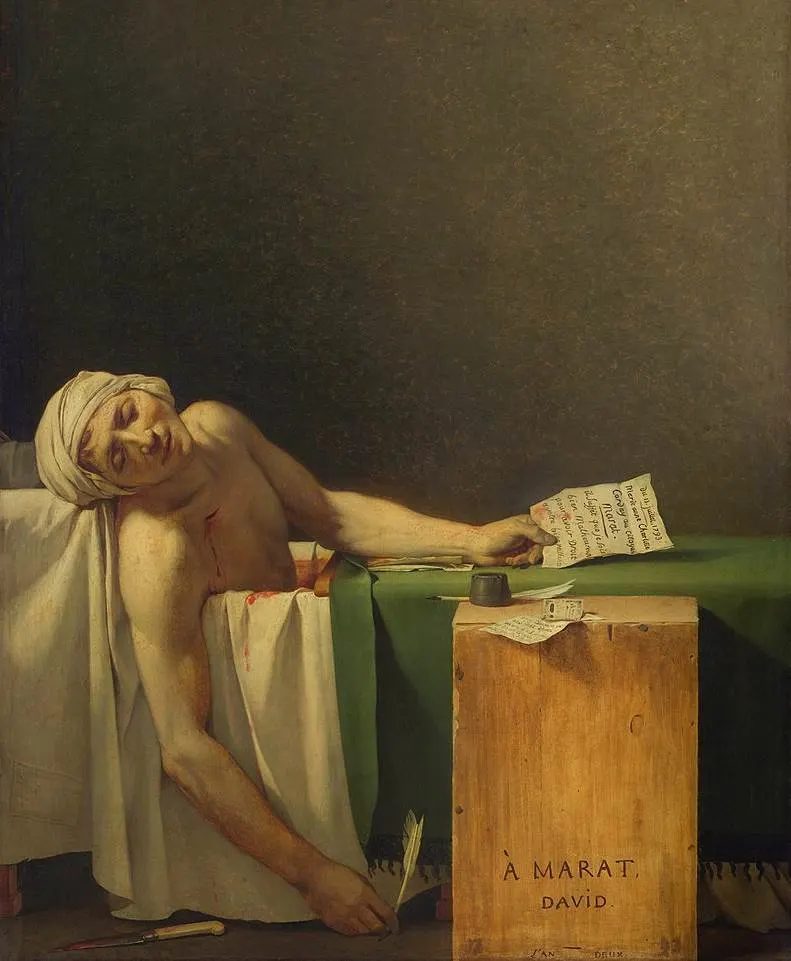
7. The Slave Ship – J.M.W. Turner
J.M.W. Turner’s “The Slave Ship” depicts a ship amidst tumultuous waters, an allegory for the horrors of the transatlantic slave trade. The painting’s swirling waves and abandoned souls invoke the tragedy of history.
This tragedy is known today as the “Zong massacre,” an incredible event in the 18th century. Dozens of slaves were flung overboard when the ship ran short on supplies.

8. Spoliarium – Juan Luna
Spoliarium by Juan Luna portrays a fallen gladiator in the aftermath of combat, serving as a poignant metaphor for the futility of human struggle and the inevitable passage of time.
The painting is a testimony to the brutality of ancient entertainment in which gladiators fought to the death. The dragged-off gladiator in this painting just lost his fight, resulting in his ultimate demise.
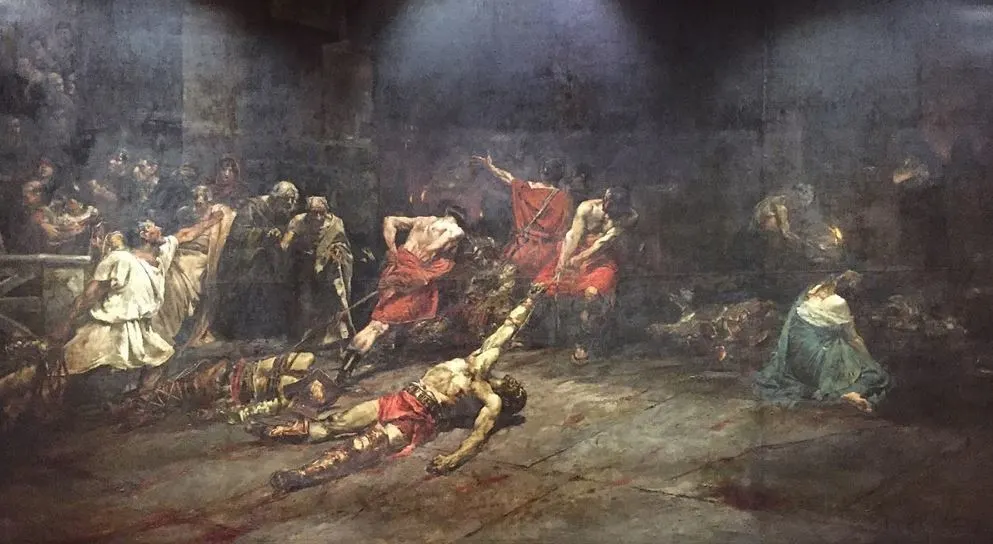
9. Automat – Edward Hopper
Edward Hopper’s “Automat” captures a lone woman lost in thought at a cafe. The painting reflects the isolation of modern urban life and the moments of solitude where internal reflections take center stage.
Hopper’s paintings were often inspired by the loneliness of urban life during the first half of the 20th century. This work captures the essence of a large number of his oeuvre magnificently.
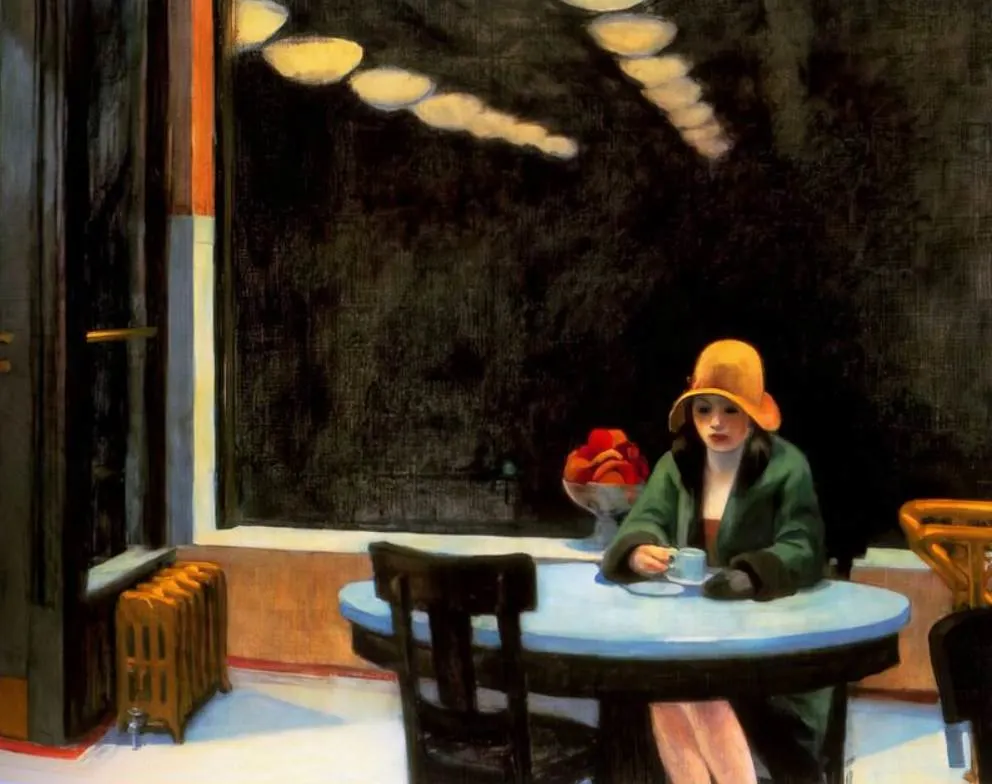
10. At Eternity’s Gate – Vincent van Gogh
Vincent van Gogh’s “At Eternity’s Gate” is a painting based on an earlier lithograph that lays bare the artist’s inner turmoil. The vivid colors and swirling brushwork reveal the raw emotions and mental anguish he grappled with.
What’s fascinating about this painting is that it was completed in May of 1890, just 2 months before the artist took his own life. This adds an additional sad dimension to this remarkable work of art.
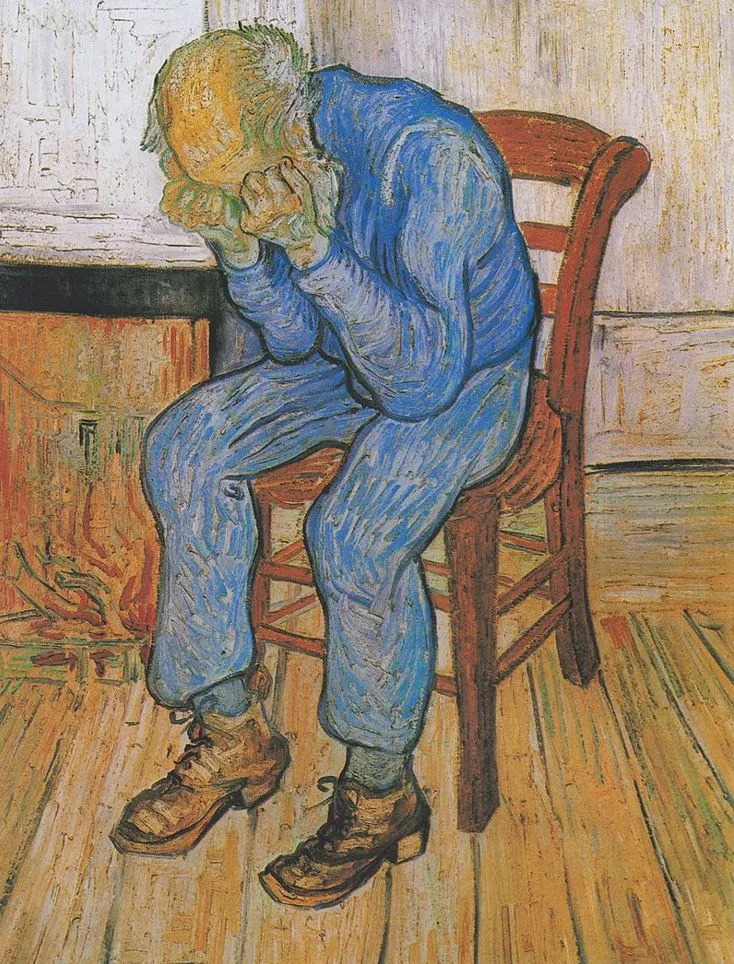
11. The Desperate Man – Gustave Courbet
Gustave Courbet’s “The Desperate Man” is a self-portrait by the artist which conveys his emotional distress at the time. The intense gaze and contorted expression encapsulate the turmoil of the human psyche.
The reason why he experienced inner turmoil at the time was because the talented painter didn’t manage to find his artistic direction yet. He eventually abandoned Romantic art in favor of the Realism paintings that make him so famous.
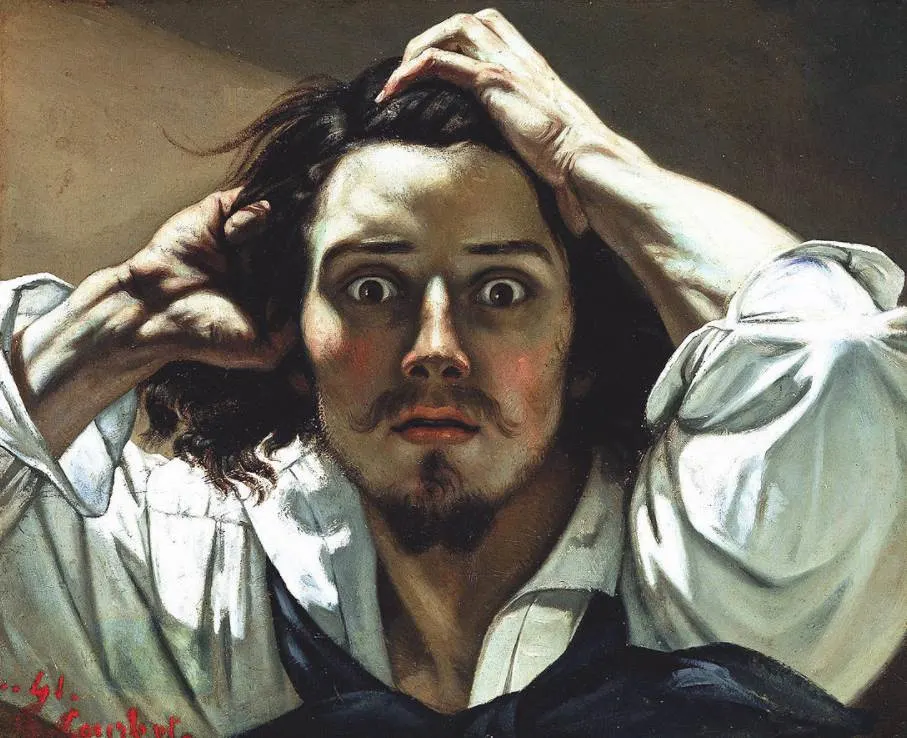
12. Guernica – Pablo Picasso
Pablo Picasso’s Guernica stands as an anti-war masterpiece, depicting the horrors of the Spanish Civil War. The fractured forms and anguished figures convey the depths of suffering and devastation.
Picasso was a known pacifist who despised the atrocities committed during wars. His lesser-known painting Massacre in Korea was completed over a decade later and is another great example of anti-war art.
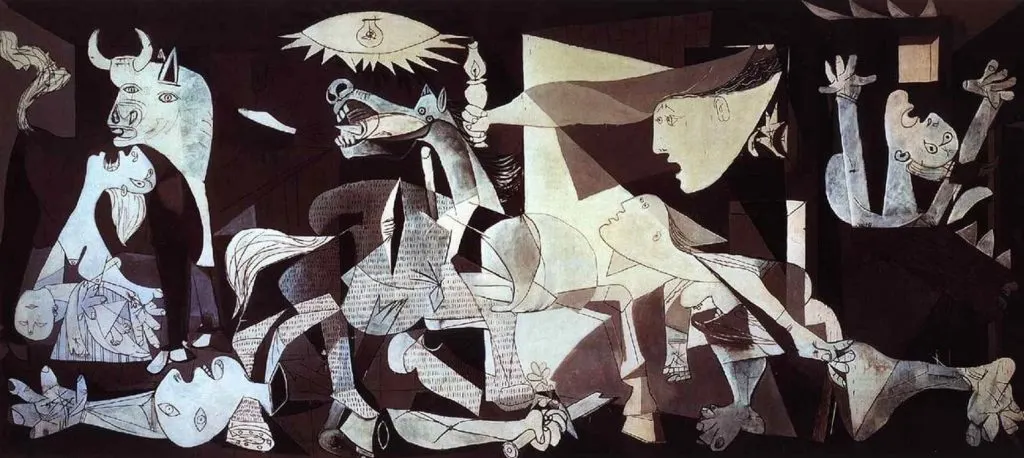
13. Nevermore – Paul Gauguin
Nevermore by Paul Gauguin captures a young girl mourning the death of her first child whom she had together with the painter. The painting delves into themes of death, loss, and the transient nature of existence.
Gauguin spent several years in Tahiti and he completed this work during his second stay, which also became his last. He fathered two children with the young local girl of whom one died in infancy. Ths tragedy inspired this painting.

14. The Scream – Edvard Munch
Edvard Munch’s iconic “The Scream” portrays a tormented figure against a chaotic backdrop. The painting’s distorted forms and vivid colors evoke the existential anxiety and emotional turbulence of the human experience.
Munch became inspired to paint this work when he experienced a mysterious event that he described as a “scream from nature” during a hike nearby Oslo in his native Norway. It’s without a doubt the most famous Expressionist painting ever completed.

15. The Honourable Mrs Graham – Thomas Gainsborough
Thomas Gainsborough’s “The Honourable Mrs. Graham” portrays a woman lost in contemplation. The painting hints at hidden depths of emotion beneath the poised exterior, inviting viewers to imagine her inner world.
What initially appears to be a lovely portrait of a fine young woman has a dark backstory. The woman died just a few years later from an illness and her husband went on to live another 50 years, never to look at this painting again.
